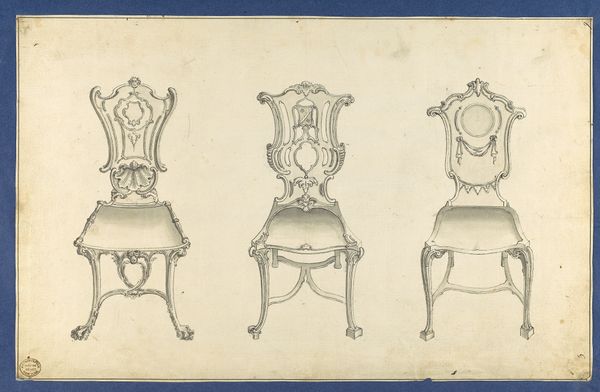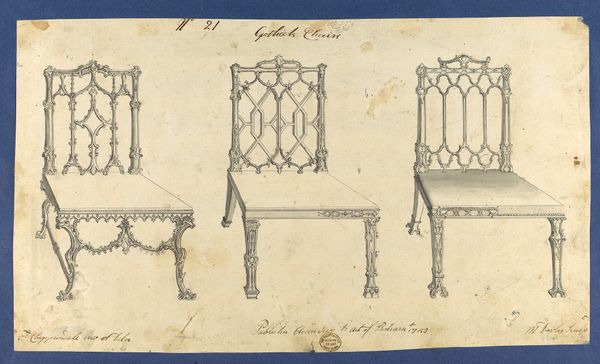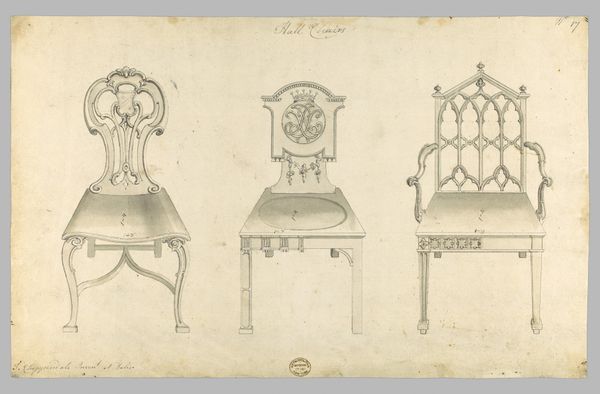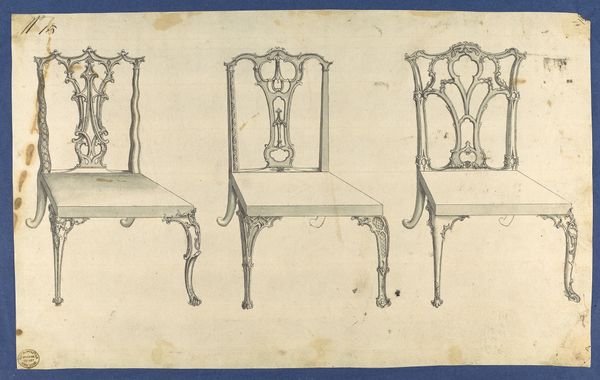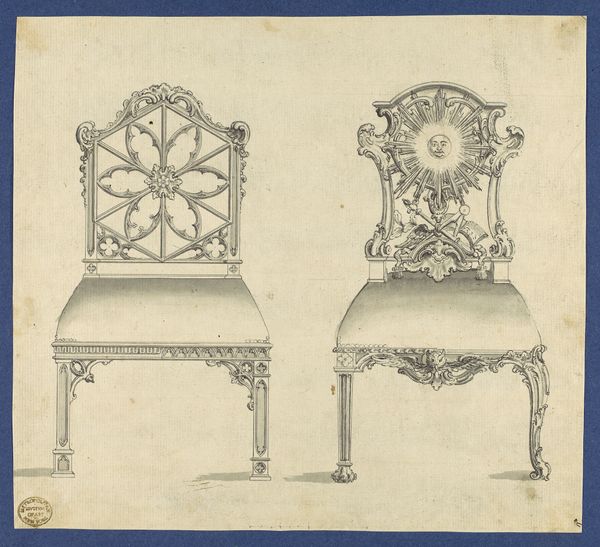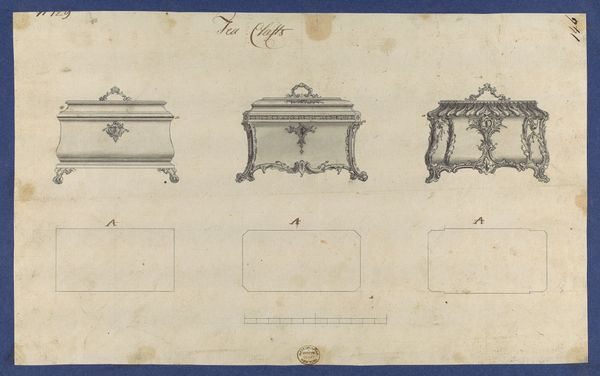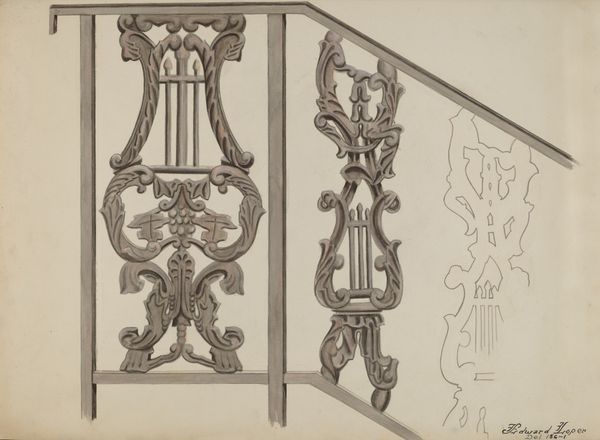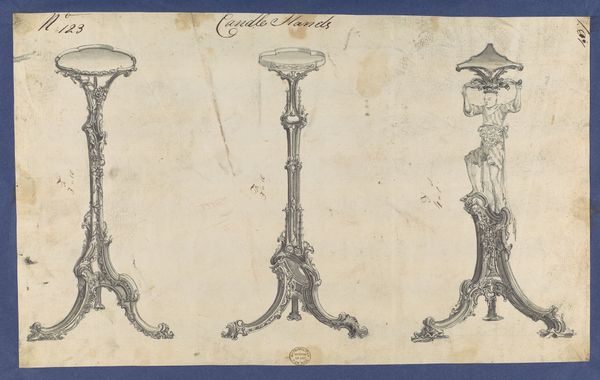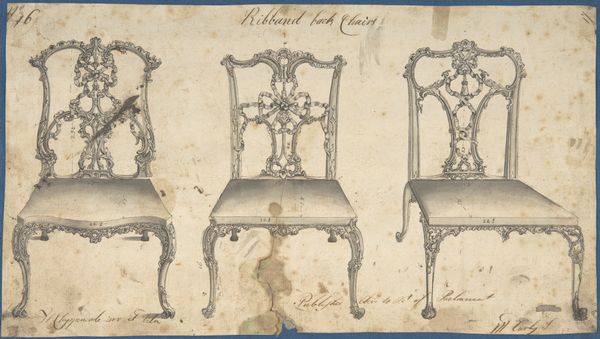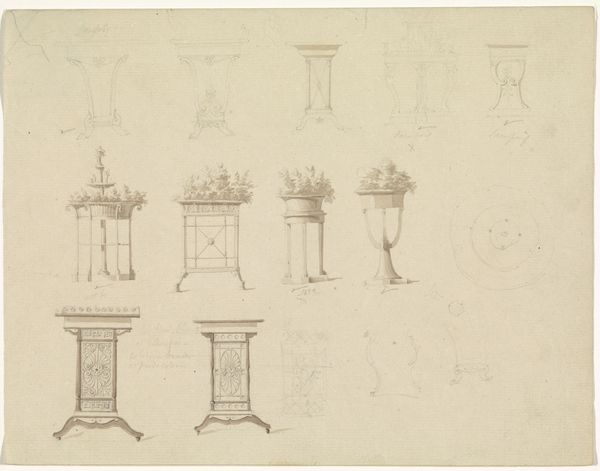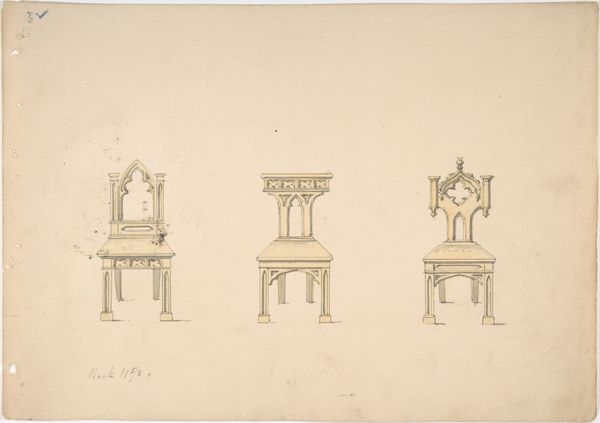
Designs for Basin Stands and Teakettle Stands, in Chippendale Drawings, Vol. I 1761
0:00
0:00
drawing, print, paper
#
drawing
# print
#
furniture
#
paper
#
geometric
#
classicism
#
line
Dimensions: sheet: 8 1/2 x 12 9/16 in. (21.7 x 31.9 cm)
Copyright: Public Domain
Editor: Here we have "Designs for Basin Stands and Teakettle Stands, in Chippendale Drawings, Vol. I," created in 1761 by Thomas Chippendale. It’s a drawing, or perhaps a print, on paper. Looking at it, I’m struck by the intricate linework and the clear classical influences. How would you interpret this work from a formalist perspective? Curator: This piece is fundamentally about the interplay of line and form. Chippendale meticulously delineates each element, showcasing a clear understanding of structure and proportion. Note how he employs symmetry to achieve a sense of balance, adhering to classical principles. Consider the variations in line weight—thick to define edges, thin to suggest interior detail. Does that emphasis on the *line* strike you as more important than its eventual utility? Editor: Yes, I think so! The designs themselves, while functional in theory, seem secondary to the elegance and precision of the drawing. The lines almost have a life of their own, irrespective of the object they depict. It is a captivating exercise in pure form, actually. Curator: Precisely. It’s a self-referential study in design. Notice, too, the use of negative space. The white of the paper becomes just as crucial as the drawn lines in defining the shapes. Do you see how the balance and relationship of those elements create visual interest? Editor: Yes, absolutely. The emptiness around the designs emphasizes their delicate nature and allows each stand to be viewed independently. What have you gleaned from the structure and layout that other visitors might overlook? Curator: Perhaps, the implied volume that he creates only through line and shading. While flat on the page, there’s a clear attempt to render them as three-dimensional objects. Look at how line and volume create texture and how texture contributes to the composition of the drawing. Editor: That makes perfect sense. I think I have a much better appreciation for the technical skill and design principles that underpin this work now. Curator: And I trust you also recognize the drawing less as a historical document or source of design than as a standalone visual structure.
Comments
No comments
Be the first to comment and join the conversation on the ultimate creative platform.
